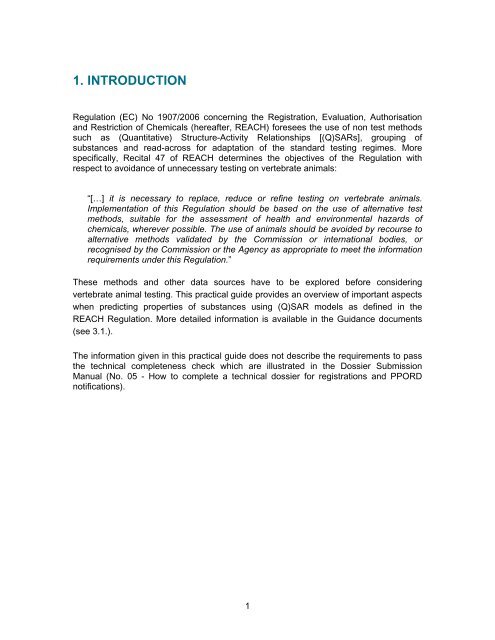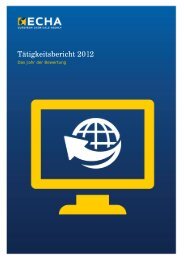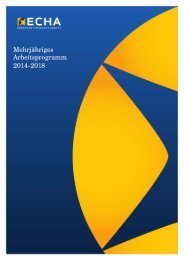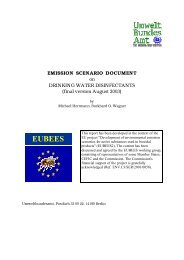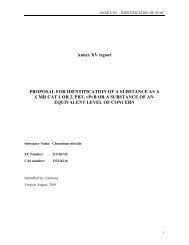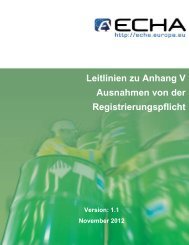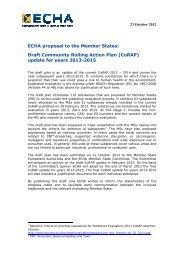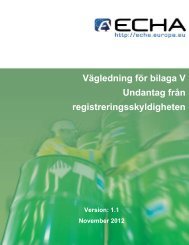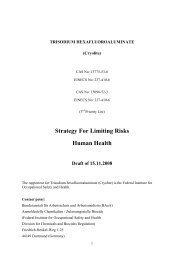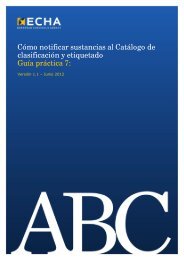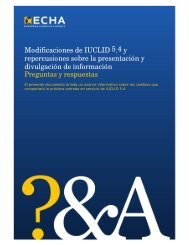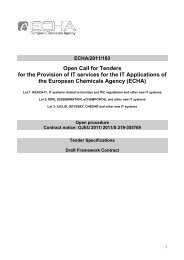Practical Guide 5: How to report (Q)SARs - ECHA - Europa
Practical Guide 5: How to report (Q)SARs - ECHA - Europa
Practical Guide 5: How to report (Q)SARs - ECHA - Europa
You also want an ePaper? Increase the reach of your titles
YUMPU automatically turns print PDFs into web optimized ePapers that Google loves.
1. INTRODUCTION<br />
Regulation (EC) No 1907/2006 concerning the Registration, Evaluation, Authorisation<br />
and Restriction of Chemicals (hereafter, REACH) foresees the use of non test methods<br />
such as (Quantitative) Structure-Activity Relationships [(Q)<strong>SARs</strong>], grouping of<br />
substances and read-across for adaptation of the standard testing regimes. More<br />
specifically, Recital 47 of REACH determines the objectives of the Regulation with<br />
respect <strong>to</strong> avoidance of unnecessary testing on vertebrate animals:<br />
“[…] it is necessary <strong>to</strong> replace, reduce or refine testing on vertebrate animals.<br />
Implementation of this Regulation should be based on the use of alternative test<br />
methods, suitable for the assessment of health and environmental hazards of<br />
chemicals, wherever possible. The use of animals should be avoided by recourse <strong>to</strong><br />
alternative methods validated by the Commission or international bodies, or<br />
recognised by the Commission or the Agency as appropriate <strong>to</strong> meet the information<br />
requirements under this Regulation.”<br />
These methods and other data sources have <strong>to</strong> be explored before considering<br />
vertebrate animal testing. This practical guide provides an overview of important aspects<br />
when predicting properties of substances using (Q)SAR models as defined in the<br />
REACH Regulation. More detailed information is available in the Guidance documents<br />
(see 3.1.).<br />
The information given in this practical guide does not describe the requirements <strong>to</strong> pass<br />
the technical completeness check which are illustrated in the Dossier Submission<br />
Manual (No. 05 - <strong>How</strong> <strong>to</strong> complete a technical dossier for registrations and PPORD<br />
notifications).<br />
1


